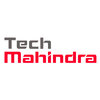


i
Infosys
Work with us
![]()
Filter interviews by
Infosys System Engineer Interview Questions and Answers for Freshers
135 Interview questions
DevOps lifecycle is the process of development, testing, deployment, and monitoring of software applications.
Continuous Development: Developers write code and commit changes to version control.
Continuous Integration: Code is automatically built and tested.
Continuous Deployment: Code is deployed to production after passing tests.
Continuous Monitoring: Performance and user feedback are monitored for improvements.
Aut...
Tomcat is an open-source web server and servlet container developed by the Apache Software Foundation.
Tomcat is used to deploy Java servlets and JSPs for web applications.
It provides a pure Java HTTP web server environment for running Java code.
Tomcat can be integrated with Apache HTTP Server to handle static content.
It is widely used for hosting Java-based web applications.
Polymorphism in programming allows objects to be treated as instances of their parent class, enabling flexibility and reusability.
Polymorphism allows a parent class to be used as a reference to its child classes.
Example: Animal class can be used to reference Dog and Cat classes.
Polymorphism enables method overriding, where child classes can provide their own implementation of methods.
Example: Animal class has a me...
OOPS stands for Object-Oriented Programming System. It is a programming paradigm based on the concept of objects.
OOPS focuses on creating objects that contain data in the form of fields (attributes) and code in the form of procedures (methods).
Encapsulation is a key principle in OOPS, where objects hide their internal state and require interaction through well-defined interfaces.
Inheritance allows objects to inher...
Program to find factorial of a given number
Create a function that takes an integer input
Initialize a variable to store the factorial value
Use a loop to multiply the factorial value by each number from 1 to the input number
Return the factorial value
Oops in Java stands for Object-Oriented Programming. It is a programming paradigm based on the concept of objects.
Oops in Java allows for the creation of classes and objects, encapsulation, inheritance, and polymorphism.
Classes are templates for objects, which contain attributes (variables) and methods (functions).
Inheritance allows a class to inherit attributes and methods from another class.
Polymorphism allows o...
Multithreading is the ability of a CPU to execute multiple threads concurrently, allowing for improved performance and responsiveness.
Multithreading allows multiple threads to run concurrently within the same process.
Each thread has its own stack and program counter, but shares the same memory space.
Multithreading can improve performance by utilizing multiple CPU cores efficiently.
Examples of multithreading includ...
Artificial intelligence is the simulation of human intelligence processes by machines, especially computer systems.
AI involves machines performing tasks that typically require human intelligence, such as visual perception, speech recognition, decision-making, and language translation.
It encompasses various technologies like machine learning, natural language processing, computer vision, and robotics.
Examples of AI...
Merge sort and quick sort are both sorting algorithms used to sort arrays.
Merge sort divides the array into two halves, recursively sorts them, and then merges them.
Quick sort selects a pivot element, partitions the array around the pivot, and recursively sorts the sub-arrays.
Both algorithms have a time complexity of O(n log n) in the average case.
Merge sort is stable, while quick sort is not.
Merge sort requires a...
SDLC (Software Development Life Cycle) is a process used to develop software applications.
SDLC is a structured approach that consists of several phases: requirements gathering, design, development, testing, deployment, and maintenance.
Each phase has specific activities and deliverables that ensure the successful development and delivery of software.
For example, in the requirements gathering phase, the system engin...
Infosys Interview Experiences
236 interviews found
I appeared for an interview in Jan 2025.
The exam consists of seven sections, and the cutoff score is quite high; it is essential to complete the exam thoroughly.
(5 Questions)
- Q1. Can you tell me about yourself?
- Q2. Can you provide details about your internship experience?
- Ans.
I completed a 6-month internship at a tech company, where I worked on network infrastructure projects.
Assisted in setting up and configuring network devices such as routers and switches
Troubleshooted network issues and implemented solutions
Collaborated with team members on various IT projects
Participated in meetings with clients to discuss project requirements
- Q3. Given a puzzle to solve
- Q4. What can you tell me about your major projects?
- Ans.
I have worked on various major projects including designing and implementing network infrastructure, developing automation scripts, and optimizing system performance.
Designed and implemented a new network infrastructure for a large company, improving network speed and reliability
Developed automation scripts to streamline system monitoring and maintenance tasks, saving time and reducing errors
Optimized system performanc...
- Q5. What is the latest news you have heard regarding technology?
- Ans.
The latest news I heard regarding technology is the release of the new iPhone 13 with improved camera features.
Apple recently announced the release of the iPhone 13 series with upgraded camera capabilities.
The new iPhone 13 models come with improved low-light performance and cinematic mode for videos.
Apple also introduced the A15 Bionic chip for enhanced performance and battery life.
Interview Preparation Tips
I appeared for an interview in Feb 2025.
(2 Questions)
- Q1. What are sorting algorithms, and can you explain their various types and uses?
- Ans.
Sorting algorithms arrange data in a specific order, crucial for efficient data processing and retrieval.
Types of sorting algorithms include: Bubble Sort, Quick Sort, Merge Sort, and Heap Sort.
Bubble Sort is simple but inefficient for large datasets; it repeatedly steps through the list.
Quick Sort is efficient for large datasets, using a divide-and-conquer approach to sort elements.
Merge Sort divides the array into hal...
- Q2. What is the Software Development Lifecycle (SDLC)?
- Ans.
The Software Development Lifecycle (SDLC) is a structured process for developing software applications through various stages.
1. Requirements Gathering: Identify user needs and system requirements.
2. Design: Create architecture and design specifications for the software.
3. Implementation: Write and compile the code based on design documents.
4. Testing: Validate the software through various testing methods (e.g., unit t...
Interview Preparation Tips
I applied via Campus Placement and was interviewed in Dec 2024. There were 2 interview rounds.
Aptitude test consists of topics like percentages ,profits and loss like this they covered all the topics there is verbal ability also
(2 Questions)
- Q1. Explain four pillars of oops
- Q2. About projects
Interview Preparation Tips
- Dsa
- Dbms
I appeared for an interview before Jul 2024, where I was asked the following questions.
- Q1. What is global and local variable?
- Ans.
Global variables are accessible throughout the program, while local variables are confined to the block or function where they are defined.
Global variables are declared outside of functions and can be accessed anywhere in the code.
Local variables are declared within a function or block and can only be accessed within that scope.
Example of a global variable: `int globalVar = 10;`
Example of a local variable: `void functi...
- Q2. Write for loop to print elements
- Ans.
A for loop iterates through an array to print each element sequentially.
Use a for loop syntax: for (initialization; condition; increment) { }
Example: for (int i = 0; i < array.length; i++) { System.out.println(array[i]); }
In JavaScript: for (let i = 0; i < array.length; i++) { console.log(array[i]); }
In Python: for element in array: print(element)
- Q3. What is class and method
- Ans.
A class is a blueprint for creating objects, while a method is a function defined within a class that operates on its data.
A class encapsulates data and behavior in object-oriented programming.
Example: class Car { } defines a Car class.
A method is a function that belongs to a class.
Example: class Car { void drive() { } } defines a drive method.
Interview Preparation Tips
I applied via Campus Placement and was interviewed in Oct 2024. There were 3 interview rounds.
Covers all aptitude topics
(2 Questions)
- Q1. Self introduction,why infosys
- Q2. Projects mini and major
(2 Questions)
- Q1. Simple java programs
- Q2. Sql queries,java programs
I applied via Campus Placement and was interviewed in Sep 2024. There were 2 interview rounds.
The round 1 was an online assessment that was held in campus labs. It was a 2 hour long test having 7 sections that are reasoning ability,verbal ability,comprehension,pseudocode,puzzle solving,essay writing,quants. There was a sectional cutoff around 70%
(2 Questions)
- Q1. Introduce yourself?
- Q2. React.js basics' questions and nextjs questions
Interview Preparation Tips
Checkout for past year interview experience as well.
I appeared for an interview in May 2025, where I was asked the following questions.
- Q1. What are the concepts of Object-Oriented Programming (OOP)?
- Ans.
OOP is a programming paradigm based on objects, encapsulating data and behavior for modular and reusable code.
Encapsulation: Bundling data and methods that operate on the data within one unit (e.g., a class).
Inheritance: Mechanism to create a new class from an existing class, inheriting attributes and methods (e.g., a 'Dog' class inheriting from an 'Animal' class).
Polymorphism: Ability to present the same interface for...
- Q2. What is encapsulation in the context of object-oriented programming?
- Ans.
Encapsulation is a fundamental concept in OOP that restricts direct access to an object's data and methods.
Encapsulation combines data and methods that operate on that data into a single unit called a class.
It restricts access to certain components, which is achieved using access modifiers like private, protected, and public.
For example, a class 'Car' can have private attributes like 'speed' and 'fuelLevel', and public...
I appeared for an interview in May 2025, where I was asked the following questions.
- Q1. What are the fundamental concepts of coding?
- Ans.
Fundamental coding concepts include syntax, data structures, algorithms, and debugging, essential for effective programming.
Syntax: The set of rules that defines the combinations of symbols that are considered to be correctly structured programs. Example: In Python, indentation is crucial.
Data Structures: Ways to organize and store data for efficient access and modification. Example: Arrays, linked lists, and hash tabl...
- Q2. What are the details of Object-Oriented Programming (OOP) concepts?
- Ans.
OOP is a programming paradigm based on objects, encapsulating data and behavior for modular and reusable code.
Encapsulation: Bundling data and methods that operate on the data within one unit (e.g., a class).
Inheritance: Mechanism to create a new class using properties and methods of an existing class (e.g., a 'Dog' class inheriting from an 'Animal' class).
Polymorphism: Ability to present the same interface for differe...
I appeared for an interview in Apr 2025, where I was asked the following questions.
- Q1. What is polymorphism
- Q2. What is cloud computing
- Q3. Tell about your projects
- Q4. What is cloud computing?
I appeared for an interview in Feb 2025.
Self introduction, academics, project in engineering,
Exams on SAP and training related to it.
Interview Preparation Tips
What people are saying about Infosys





Infosys Interview FAQs
Some of the top questions asked at the Infosys System Engineer interview for freshers -
The duration of Infosys System Engineer interview process can vary, but typically it takes about less than 2 weeks to complete.
Tell us how to improve this page.
Infosys Interviews By Designations
- Infosys System Engineer Interview Questions
- Infosys Software Engineer Interview Questions
- Infosys Associate Consultant Interview Questions
- Infosys Technology Analyst Interview Questions
- Infosys Senior Systems Engineer Interview Questions
- Infosys Software Developer Interview Questions
- Infosys Business Analyst Interview Questions
- Infosys Senior Associate Consultant Interview Questions
- Show more
Interview Questions for Popular Designations
Overall Interview Experience Rating
based on 123 interview experiences
Difficulty level
Duration
Top Skills for Infosys System Engineer






System Engineer Interview Questions from Similar Companies
Infosys System Engineer Reviews and Ratings
based on 4k reviews
Rating in categories
|
Technology Analyst
54.8k
salaries
| ₹4.8 L/yr - ₹10 L/yr |
|
Senior Systems Engineer
54.2k
salaries
| ₹2.5 L/yr - ₹6.3 L/yr |
|
Technical Lead
35.3k
salaries
| ₹9.6 L/yr - ₹16.5 L/yr |
|
System Engineer
32.6k
salaries
| ₹2.4 L/yr - ₹5.5 L/yr |
|
Senior Associate Consultant
32k
salaries
| ₹8.2 L/yr - ₹15 L/yr |

TCS

Wipro

Cognizant

Accenture
- Home >
- Interviews >
- Infosys Interview Questions >
- Infosys Interview Questions for Fresher











